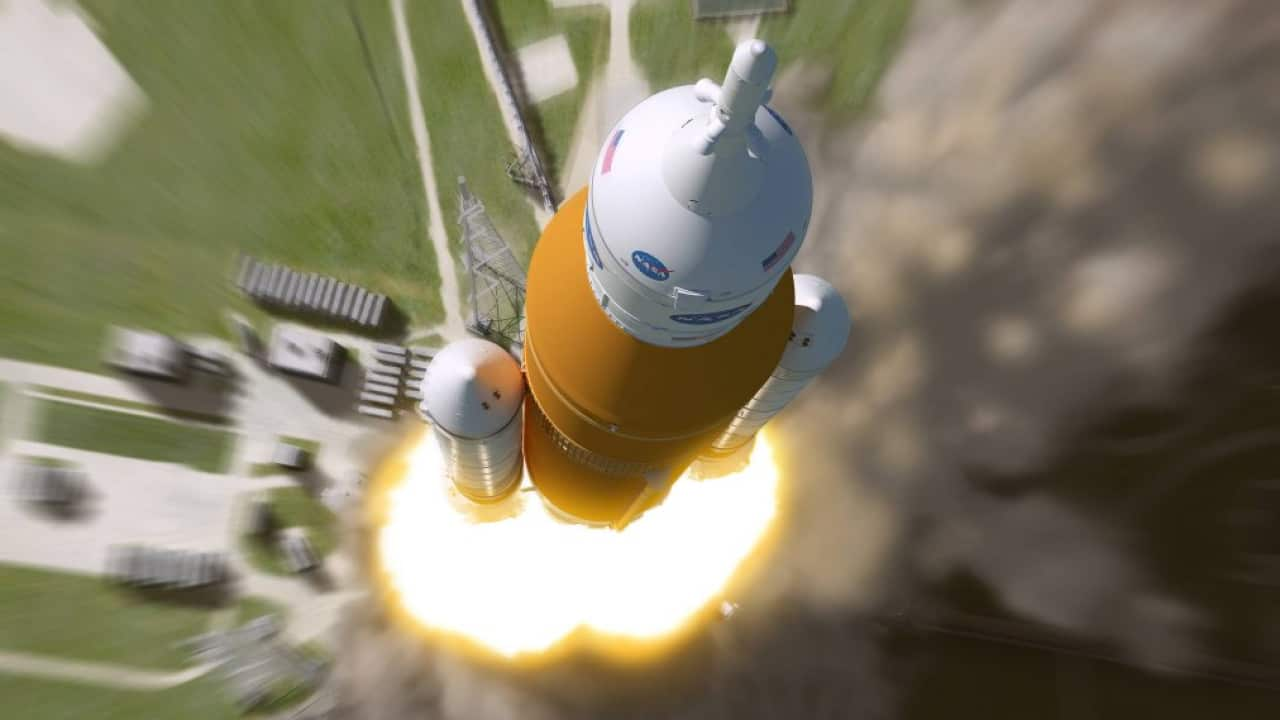The 2015 fictional movie "The Martian" depicted how it could look, but here on Earth, engineers and scientists are working out how to make it a reality.
The US space agency, NASA, says the Space Launch System (SLS) will be the most powerful rocket in the world. It will need to be to propel humans all the way to Mars.
The manager of the science programs office at the Marshall Space Flight Center, Paul Gilbert, said the team is still in the very early stages of working out how to get to the red planet.
"Part of that is working with our partners from the International Space Station. We're working through that organisation, having discussions, what's their ideas, here are some of our ideas," he said.
"And so, we're in the early sketchpad phases of trying to work that out and the partners have ideas and desires and things they want to do in cislunar space. And so, we've got to come together as a global family on what that next step is, and what kind of things do we want to explore together."
Teams at the Marshall Space Flight Center are taking ideas from concept to design, developing spacecraft that will land on Mars and support life in frigid temperatures.
Aerospace engineer Tara Polsgrove said work is underway on designs for a Mars lander that would safely deliver humans to the surface of the planet.
READ MORE

NASA calls off Mars mission
"A Mars lander is essentially two parts," she said. "The bottom half is the descent stage, it has the propulsion systems on it to enable that soft landing. And, on top, is the payload, so we treat this kind of like a flatbed truck."
Spacecraft designs that would take humans through deep space are tested at NASA's Environmental Control and Life Support System (ECLSS) test chamber.
NASA's David Smitherman said teams are using the International Space Station as a model for new ways to generate oxygen.
Teams are also using simulated Martian rock and soil to advance 3-D printing that could help astronauts build structures on Mars with materials already there.
Sections of the Space Launch System, which will carry the Orion spacecraft, are being constructed across the United States.
The Orion spacecraft, the successor to NASA's space shuttle programme, made its first successful deep-space test voyage with a crew on board in December 2014 - an important step on the journey to Mars.
NASA scientists and engineers are now working towards the first flight of Orion on top of the Space Launch System rocket. This test will not have humans on board.
Rocket engines are being tested and NASA expects the launch of the first version of the SLS in 2018.
"When the SLS and Orion and the ground support come together at Kennedy Space Center, I think the nation will be proud of what they've invested in NASA," says Patrick Scheuermann, former Marshall Space Flight Center Director who retired from NASA in November 2015.
The first expedition to Mars is planned for the 2030s.



